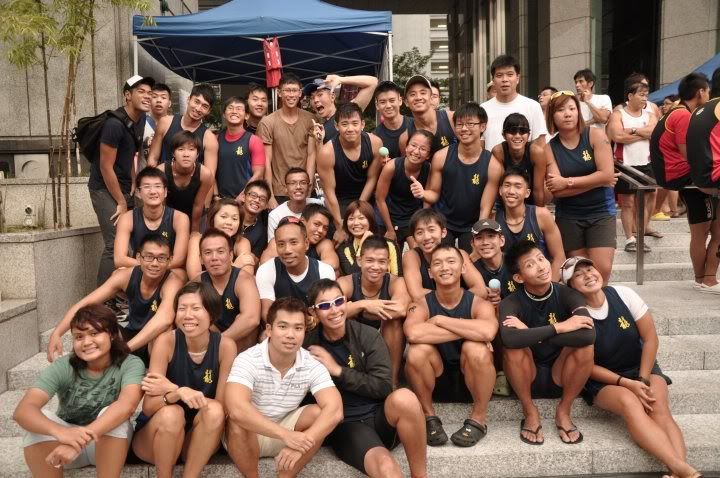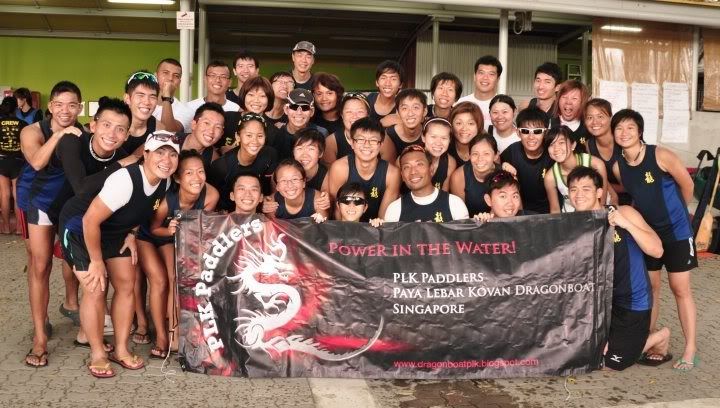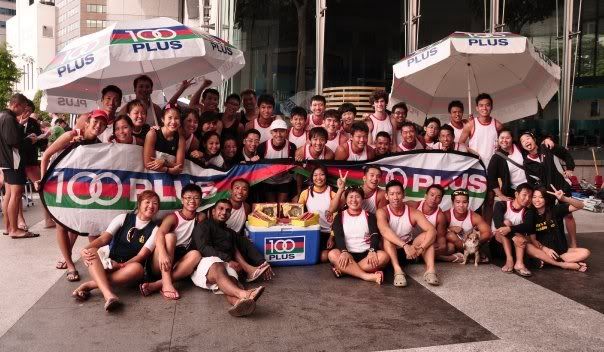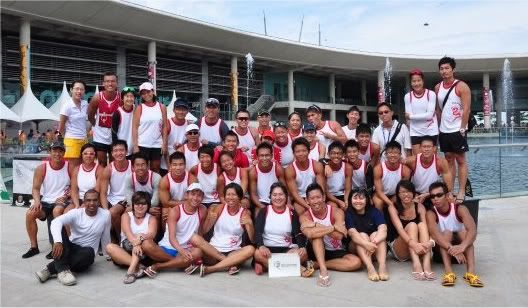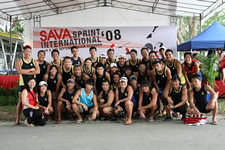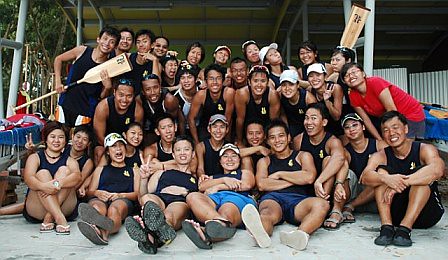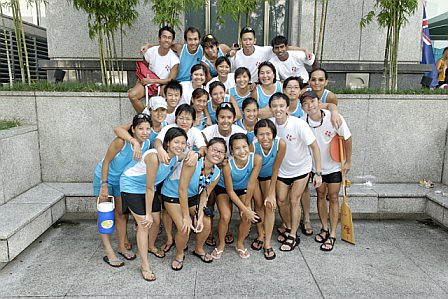There used to be a strong belief in rowing that you have to be a big, powerful, anaerobic beast to do well. This was fuelled by the fact that most successful rowers were, indeed, of a bigger build, not unlike the Incredible Hulk. Such athletes trained extremely hard but not necessarily according to the demands of their sport. Depending on crew size, gender and, of course, ability, it is more accurate to think of rowing as a power endurance sport rather than a strength sport.
THE IMPORTANCE OF ENDURANCE...
Obviously great strength is needed to generate large force and propel the boat at high speed. But it has been shown physiologically that at least 70% of the energy requirement comes from aerobic metabolism (the metabolic process that occurs in the cells, by which the body uses oxygen to produce energy). The remainder comes from anaerobic sources. Just by looking at this physiological breakdown, it is easy to deduce that plenty of work must be done to condition the aerobic, or cardio respiratory system to guarantee optimal race performance. However large and powerful a rower or crew, if they lack sufficient endurance, they will be disadvantaged in the closing stages (i.e. Last Charge) of a race. Strength training is just as important but to compete convincingly, one must first have endurance.
THE TYPES OF ENDURANCE...
They are aerobic endurance, anaerobic endurance, speed endurance and strength endurance. A sound basis of aerobic endurance is fundamental for all events.
TO BUILD ENDURANCE...
Most experts recommend the Concept 2 Indoor Rowing Machine, regarded by many to be the ultimate indoor training weapon. Concept 2 is an endurance training system that focuses on proper body position with intensity equivalent, or exceeding, actual sports conditions. Peak power, power endurance and muscular endurance is the ultimate goal of a rowing training program.
Bottom line, the land training that is most likely to improve your dragon boat rowing performance is more rowing!
ROWING 101
![]() Labels:
Interesting / News,
Techniques
Labels:
Interesting / News,
Techniques
Perfecting The Dragon Boat Technique

Basic execution, including flawless strokes and synchrony, is the most important part of competitive dragon boating.
There are four basic phases of paddling:
1. "Catch" as you lean forward, turn your body slightly toward your partner and submerge your paddle in the water. Make sure that the full blade catches water.
2. "Pull" as you lean back to pull water. Propulsion of the boat is based on countering that water resistance you feel. Therefore, the boat experiences maximum propulsion as the full blades of all 20 paddlers catch and pull water at the same time.
3. "Finish" as you pull the blade out of the water. This phase signals the completion of your first stroke and preparation for your next stroke.
4. "Reach" as you lean forward again to prepare for the "Catch" phase of your next stroke. The "finish" and "reach" phases are sometimes known as "ready-and-reach". Together, they are also addressed as the "recovery" phase.
As the saying goes: "Practice makes perfect." Perfect execution of the dragon boat technique requires physical conditioning outside of dragon boating. So remember, the key to success is training, training, and more training!
For more info on the dragon boat stroke, visit http://www.paddlersanon.com/stroke.php
![]() Labels:
Techniques
Labels:
Techniques
PLK Coxswain Workshop
Date: 11th July 2009 (Sat)
Time: 4.00pm - 5.30pm
Venue: Bedok Reservoir
Practical test dates: 18th July/ 1st Aug
Please register your interest with Evelyn. Workshop is limited to 12 persons only. Places are available on a 1st-come-1st-served basis!
Ergometer Technique Videos By WaterRower
![]() Labels:
Techniques,
Videos
Labels:
Techniques,
Videos
Tips to Injury-Free Training
- No Belt: Train without a weight lifting belt in order to develop your body’s natural belt consisting of the muscles in the abdominals, obliques, and lower back.
- Advice: Develop a good friendship with a knowledgeable athletic trainer or physical therapist who can provide you with trustworthy advice.
- Baseline Measurements: Take your resting heart rate and body temperature for one week straight, first thing in the morning, to provide you with baseline measurements; if your temperature ranges more than 0.5 degrees or your resting heart rate more than 10 beats from baseline, it may be an indication that you are overtraining or getting sick. Rest!
- Nutrition: Include a good source of carbohydrates and protein following any strenuous high-intensity intervals or strength workout to help your body replenish its glycogen stores and start repairing any damage done during strength training. That could be as simple as a piece of fruit and some non-fat yogurt, or a turkey sandwich on whole wheat bread.
- Stretches: Learn a series of good stretches specifically chosen for your body’s needs and do them regularly, particularly if you’ve been injured in the past.
- Form: Maintain proper form at all times and concentrate on the muscles you’re targeting – even one slip in breathing can lead to injury if you’re not paying attention to what you’re doing.
- Goals: Have a goal and a periodized workout plan to get you to that goal; be sure the plan varies from week to week to avoid getting stuck in a plateau that leaves you frustrated and unhappy with your progress. Frequently starting and stopping a program without establishing any regular consistency is one of the big causes of injury!
- Gear: Be aware of your training surroundings, gear, and the equipment you’re using, all the way down to your running shoes, and replace anything that looks like it’s starting to wear out. As an example, improper footwear can lead to a change in gait and compensation by other muscles that can then lead to injury weeks, months, or years down the line!
![]() Labels:
Techniques
Labels:
Techniques
Power, Length & Rate
Three factors determine the speed of the boat. They are:
1. POWER - How FAST the boat travels in each stroke
2. LENGTH - How FAR the boat travels in each stroke
3. RATE - How MANY strokes are rowed.
If the rowers row at maximum capacity in all three of these components at the same time, it is doubtful that they could row 100 strokes before their technique withered and the boat speed falter.
The number of strokes required to complete 800 meters is from 300 to 400 and clearly, equilibrium of power, length and rate must be achieved.
Dragonboating is basically a power endurance sport, but it also requires a high level of skill. Choosing the "right" technique to adopt and then build upon it. There are many differing opinions about which method is the best. Whatever the method preferred, power, length and rate are the basic ingredients.
RATE
Rate is the easiest to achieve. Keeping it at its optimum in a race is not the main problem. Length and power are the first to deteriorate when the pressure of the race reaches its peak.
LENGTH
The most efficient part of the stroke is when the blade is passing at 90 degrees to the boat. Only when it is at this angle is its force propelling the boat wholly in the correct direction. In theory, an efficient length of the stroke is from 60 degrees at the catch to 135 degrees at the finish. In practice, the body prevents the oar from reaching more than 120 degrees. To achieve 60 degrees at the catch, the reach must extend beyond this angle. A longer finish can be drawn in a more streamline and water cutting boat but it is inefficient to draw more than 120 degrees.
POWER
Maximal power is achieved by appropriate action of the contributing muscles. Always remember to exhale when exerting pressure or pulling.
LEGS - Quadriceps (to a certain extend)
BACK - Lower Back and the core muscle
SHOULDERS & ARMS - Deltoid, Latissimus Dorsi, Trapezius, Rhomboids, Brachioradialis and Biceps Brachii.
By Coach (Kim Hwa)
![]() Labels:
Techniques
Labels:
Techniques
4 Basic Phases Of Paddling
 Some teams who emphasize stroke rate might put their strongest members in the front to set the stroke rate for the team. Some others who emphasize the mechanical science of propulsion put their strongest members in the back to deal with water resistance. There are also those who theorize on the center of gravity of the boat and the best lineup to lower that center of gravity. Whatever the lineup, there is a rationale for it. Yet, basic execution, including flawless strokes and synchrony, is the most important part of competitive dragonboating. No amount of alignment experimentation will help the team if its members fail on the basics.
Some teams who emphasize stroke rate might put their strongest members in the front to set the stroke rate for the team. Some others who emphasize the mechanical science of propulsion put their strongest members in the back to deal with water resistance. There are also those who theorize on the center of gravity of the boat and the best lineup to lower that center of gravity. Whatever the lineup, there is a rationale for it. Yet, basic execution, including flawless strokes and synchrony, is the most important part of competitive dragonboating. No amount of alignment experimentation will help the team if its members fail on the basics.
- "Catch" as you lean forward, turn your body slightly toward your partner and submerge your paddle in the water. Make sure that the full blade catches water.
- "Pull" as you lean back to pull water. Propulsion of the boat is based on countering that water resistance you feel. Therefore, the boat experiences maximum propulsion as the full blades of all 20 paddlers catch and pull water at the same time.
- "Finish" as you pull the blade out of the water. This phase signals the completion of your first stroke and preparation for your next stroke.
- "Reach" as you lean forward again to prepare for the "Catch" phase of your next stroke.
![]() Labels:
Techniques
Labels:
Techniques
Tackling The Ergometer
 Rowing is an endurance sport which requires a high level of skill. This skill is based on the co-ordination of the legs (which create the most amount of driving force of the rowing action), torso and arms in propelling the boat across the water. The rowing action comprises of both fast (drive phase) and slow (recovery phase) movements. Skill is also required in combining these movements into a rhythm in order to create a smooth, flowing, unhurried rowing action (what we call in this section, ratio and rhythm).
Rowing is an endurance sport which requires a high level of skill. This skill is based on the co-ordination of the legs (which create the most amount of driving force of the rowing action), torso and arms in propelling the boat across the water. The rowing action comprises of both fast (drive phase) and slow (recovery phase) movements. Skill is also required in combining these movements into a rhythm in order to create a smooth, flowing, unhurried rowing action (what we call in this section, ratio and rhythm).
The correct rowing action can be quite difficult to grasp especially if you do not have any experience rowing in an actual boat. In this section, About Technique we outline a variety of ways in order to learn the correct rowing technique......
Click [here] to find out more about the proper Ergometer rowing techniques (33 Short Articles).
![]() Labels:
Techniques
Labels:
Techniques


